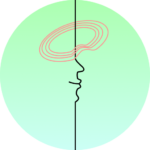Exploring the World of Pain Management Machines
Pain management machines are revolutionizing the way we approach chronic and acute pain relief.

The Evolution of Pain Management Machines
The journey of pain management machines is a fascinating tale of technological advancement and medical innovation. It all began with simple devices like hot and cold compresses, which have been used for centuries to alleviate pain. As time progressed, the need for more sophisticated solutions became apparent, leading to the development of devices that could deliver targeted therapy.
In the 20th century, the introduction of electrical stimulation devices marked a significant leap forward. These machines used electrical impulses to interfere with pain signals, providing relief for a wide range of conditions. This era also saw the rise of transcutaneous electrical nerve stimulation (TENS) units, which became a staple in both clinical and home settings.
As technology continued to evolve, so did pain management machines. The advent of digital technology brought about devices that could be programmed for specific therapeutic outcomes. More recently, wearable technology has emerged, offering portable and user-friendly options for pain relief. These advancements have not only expanded the capabilities of pain management machines but have also made them more accessible to the general public.
How Pain Management Machines Work
Pain management machines operate on various principles, depending on their design and intended use. At their core, these devices aim to interrupt or alter the perception of pain through different mechanisms. One common approach is electrical stimulation, where machines deliver controlled electrical impulses to the affected area. This stimulation can block pain signals from reaching the brain, thereby reducing the sensation of pain.
Another method involves the use of heat or cold therapy. Devices that provide thermal therapy can help reduce inflammation and increase blood flow, promoting healing and alleviating discomfort. Some machines combine these methods, offering a comprehensive approach to pain management.
Advanced pain management machines may also incorporate features like biofeedback, which allows users to monitor physiological responses and adjust their therapy accordingly. These machines are often equipped with user-friendly interfaces, enabling individuals to customize their treatment based on their specific needs.
- Electrical stimulation: Blocks pain signals
- Thermal therapy: Reduces inflammation
- Biofeedback: Monitors physiological responses
Benefits of Using Pain Management Machines
The use of pain management machines offers numerous advantages, making them a valuable tool in both clinical and personal settings. One of the most significant benefits is their ability to provide non-invasive pain relief. Unlike medications, which can have side effects, these machines offer a drug-free alternative that is safe and effective for many individuals.
Moreover, pain management machines can be tailored to address specific types of pain. Whether it’s chronic back pain or acute post-surgical discomfort, these devices can be adjusted to deliver the appropriate level of therapy. This customization ensures that users receive the most effective treatment possible.
Another advantage is the convenience these machines offer. Many modern devices are portable and easy to use, allowing individuals to manage their pain on the go. This mobility is particularly beneficial for those with busy lifestyles or limited access to healthcare facilities.
- Non-invasive and drug-free
- Customizable for specific pain types
- Portable and easy to use
